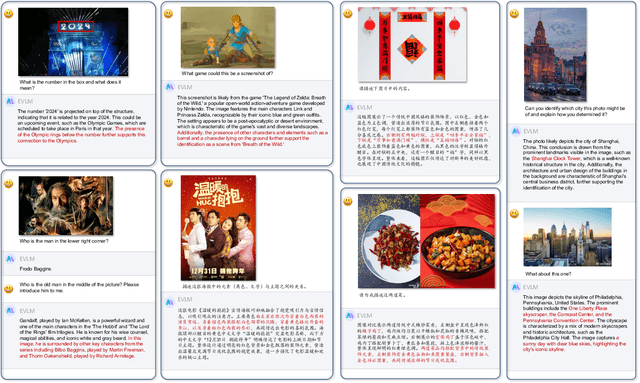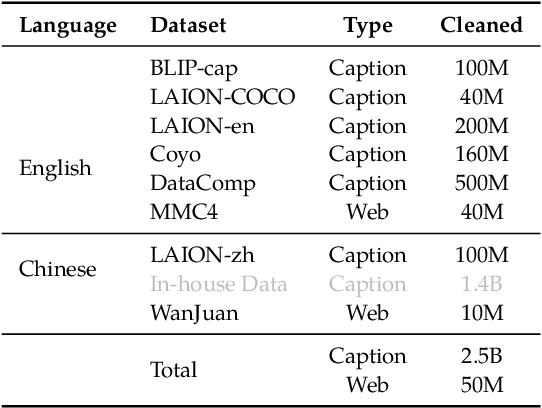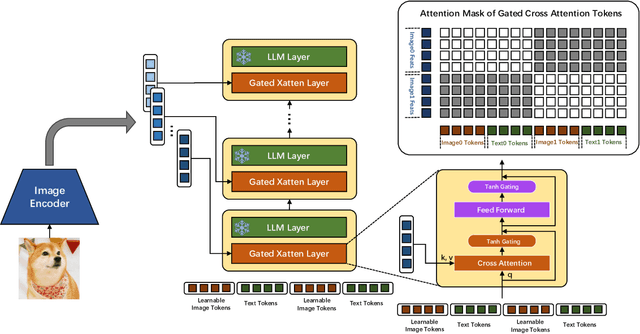Tianke Zhang
Why Distillation can Outperform Zero-RL: The Role of Flexible Reasoning
May 27, 2025Abstract:Reinforcement learning (RL) has played an important role in improving the reasoning ability of large language models (LLMs). Some studies apply RL directly to \textit{smaller} base models (known as zero-RL) and also achieve notable progress. However, in this paper, we show that using only 920 examples, a simple distillation method based on the base model can clearly outperform zero-RL, which typically requires much more data and computational cost. By analyzing the token frequency in model outputs, we find that the distilled model shows more flexible reasoning. It uses anthropomorphic tokens and logical connectors much more often than the zero-RL model. Further analysis reveals that distillation enhances the presence of two advanced cognitive behaviors: Multi-Perspective Thinking or Attempting and Metacognitive Awareness. Frequent occurrences of these two advanced cognitive behaviors give rise to flexible reasoning, which is essential for solving complex reasoning problems, while zero-RL fails to significantly boost the frequency of these behaviors.
R1-Reward: Training Multimodal Reward Model Through Stable Reinforcement Learning
May 05, 2025Abstract:Multimodal Reward Models (MRMs) play a crucial role in enhancing the performance of Multimodal Large Language Models (MLLMs). While recent advancements have primarily focused on improving the model structure and training data of MRMs, there has been limited exploration into the effectiveness of long-term reasoning capabilities for reward modeling and how to activate these capabilities in MRMs. In this paper, we explore how Reinforcement Learning (RL) can be used to improve reward modeling. Specifically, we reformulate the reward modeling problem as a rule-based RL task. However, we observe that directly applying existing RL algorithms, such as Reinforce++, to reward modeling often leads to training instability or even collapse due to the inherent limitations of these algorithms. To address this issue, we propose the StableReinforce algorithm, which refines the training loss, advantage estimation strategy, and reward design of existing RL methods. These refinements result in more stable training dynamics and superior performance. To facilitate MRM training, we collect 200K preference data from diverse datasets. Our reward model, R1-Reward, trained using the StableReinforce algorithm on this dataset, significantly improves performance on multimodal reward modeling benchmarks. Compared to previous SOTA models, R1-Reward achieves a $8.4\%$ improvement on the VL Reward-Bench and a $14.3\%$ improvement on the Multimodal Reward Bench. Moreover, with more inference compute, R1-Reward's performance is further enhanced, highlighting the potential of RL algorithms in optimizing MRMs.
VLM as Policy: Common-Law Content Moderation Framework for Short Video Platform
Apr 21, 2025Abstract:Exponentially growing short video platforms (SVPs) face significant challenges in moderating content detrimental to users' mental health, particularly for minors. The dissemination of such content on SVPs can lead to catastrophic societal consequences. Although substantial efforts have been dedicated to moderating such content, existing methods suffer from critical limitations: (1) Manual review is prone to human bias and incurs high operational costs. (2) Automated methods, though efficient, lack nuanced content understanding, resulting in lower accuracy. (3) Industrial moderation regulations struggle to adapt to rapidly evolving trends due to long update cycles. In this paper, we annotate the first SVP content moderation benchmark with authentic user/reviewer feedback to fill the absence of benchmark in this field. Then we evaluate various methods on the benchmark to verify the existence of the aforementioned limitations. We further propose our common-law content moderation framework named KuaiMod to address these challenges. KuaiMod consists of three components: training data construction, offline adaptation, and online deployment & refinement. Leveraging large vision language model (VLM) and Chain-of-Thought (CoT) reasoning, KuaiMod adequately models video toxicity based on sparse user feedback and fosters dynamic moderation policy with rapid update speed and high accuracy. Offline experiments and large-scale online A/B test demonstrates the superiority of KuaiMod: KuaiMod achieves the best moderation performance on our benchmark. The deployment of KuaiMod reduces the user reporting rate by 20% and its application in video recommendation increases both Daily Active User (DAU) and APP Usage Time (AUT) on several Kuaishou scenarios. We have open-sourced our benchmark at https://kuaimod.github.io.
InstructEngine: Instruction-driven Text-to-Image Alignment
Apr 14, 2025Abstract:Reinforcement Learning from Human/AI Feedback (RLHF/RLAIF) has been extensively utilized for preference alignment of text-to-image models. Existing methods face certain limitations in terms of both data and algorithm. For training data, most approaches rely on manual annotated preference data, either by directly fine-tuning the generators or by training reward models to provide training signals. However, the high annotation cost makes them difficult to scale up, the reward model consumes extra computation and cannot guarantee accuracy. From an algorithmic perspective, most methods neglect the value of text and only take the image feedback as a comparative signal, which is inefficient and sparse. To alleviate these drawbacks, we propose the InstructEngine framework. Regarding annotation cost, we first construct a taxonomy for text-to-image generation, then develop an automated data construction pipeline based on it. Leveraging advanced large multimodal models and human-defined rules, we generate 25K text-image preference pairs. Finally, we introduce cross-validation alignment method, which refines data efficiency by organizing semantically analogous samples into mutually comparable pairs. Evaluations on DrawBench demonstrate that InstructEngine improves SD v1.5 and SDXL's performance by 10.53% and 5.30%, outperforming state-of-the-art baselines, with ablation study confirming the benefits of InstructEngine's all components. A win rate of over 50% in human reviews also proves that InstructEngine better aligns with human preferences.
Kwai-STaR: Transform LLMs into State-Transition Reasoners
Nov 07, 2024Abstract:Mathematical reasoning presents a significant challenge to the cognitive capabilities of LLMs. Various methods have been proposed to enhance the mathematical ability of LLMs. However, few recognize the value of state transition for LLM reasoning. In this work, we define mathematical problem-solving as a process of transiting from an initial unsolved state to the final resolved state, and propose Kwai-STaR framework, which transforms LLMs into State-Transition Reasoners to improve their intuitive reasoning capabilities. Our approach comprises three main steps: (1) Define the state space tailored to the mathematical reasoning. (2) Generate state-transition data based on the state space. (3) Convert original LLMs into State-Transition Reasoners via a curricular training strategy. Our experiments validate the effectiveness of Kwai-STaR in enhancing mathematical reasoning: After training on the small-scale Kwai-STaR dataset, general LLMs, including Mistral-7B and LLaMA-3, achieve considerable performance gain on the GSM8K and GSM-Hard dataset. Additionally, the state transition-based design endows Kwai-STaR with remarkable training and inference efficiency. Further experiments are underway to establish the generality of Kwai-STaR.
EVLM: An Efficient Vision-Language Model for Visual Understanding
Jul 19, 2024



Abstract:In the field of multi-modal language models, the majority of methods are built on an architecture similar to LLaVA. These models use a single-layer ViT feature as a visual prompt, directly feeding it into the language models alongside textual tokens. However, when dealing with long sequences of visual signals or inputs such as videos, the self-attention mechanism of language models can lead to significant computational overhead. Additionally, using single-layer ViT features makes it challenging for large language models to perceive visual signals fully. This paper proposes an efficient multi-modal language model to minimize computational costs while enabling the model to perceive visual signals as comprehensively as possible. Our method primarily includes: (1) employing cross-attention to image-text interaction similar to Flamingo. (2) utilize hierarchical ViT features. (3) introduce the Mixture of Experts (MoE) mechanism to enhance model effectiveness. Our model achieves competitive scores on public multi-modal benchmarks and performs well in tasks such as image captioning and video captioning.
TrainerAgent: Customizable and Efficient Model Training through LLM-Powered Multi-Agent System
Nov 23, 2023Abstract:Training AI models has always been challenging, especially when there is a need for custom models to provide personalized services. Algorithm engineers often face a lengthy process to iteratively develop models tailored to specific business requirements, making it even more difficult for non-experts. The quest for high-quality and efficient model development, along with the emergence of Large Language Model (LLM) Agents, has become a key focus in the industry. Leveraging the powerful analytical, planning, and decision-making capabilities of LLM, we propose a TrainerAgent system comprising a multi-agent framework including Task, Data, Model and Server agents. These agents analyze user-defined tasks, input data, and requirements (e.g., accuracy, speed), optimizing them comprehensively from both data and model perspectives to obtain satisfactory models, and finally deploy these models as online service. Experimental evaluations on classical discriminative and generative tasks in computer vision and natural language processing domains demonstrate that our system consistently produces models that meet the desired criteria. Furthermore, the system exhibits the ability to critically identify and reject unattainable tasks, such as fantastical scenarios or unethical requests, ensuring robustness and safety. This research presents a significant advancement in achieving desired models with increased efficiency and quality as compared to traditional model development, facilitated by the integration of LLM-powered analysis, decision-making, and execution capabilities, as well as the collaboration among four agents. We anticipate that our work will contribute to the advancement of research on TrainerAgent in both academic and industry communities, potentially establishing it as a new paradigm for model development in the field of AI.
Audio-Driven 3D Facial Animation from In-the-Wild Videos
Jun 20, 2023Abstract:Given an arbitrary audio clip, audio-driven 3D facial animation aims to generate lifelike lip motions and facial expressions for a 3D head. Existing methods typically rely on training their models using limited public 3D datasets that contain a restricted number of audio-3D scan pairs. Consequently, their generalization capability remains limited. In this paper, we propose a novel method that leverages in-the-wild 2D talking-head videos to train our 3D facial animation model. The abundance of easily accessible 2D talking-head videos equips our model with a robust generalization capability. By combining these videos with existing 3D face reconstruction methods, our model excels in generating consistent and high-fidelity lip synchronization. Additionally, our model proficiently captures the speaking styles of different individuals, allowing it to generate 3D talking-heads with distinct personal styles. Extensive qualitative and quantitative experimental results demonstrate the superiority of our method.
From Knowledge Distillation to Self-Knowledge Distillation: A Unified Approach with Normalized Loss and Customized Soft Labels
Mar 23, 2023Abstract:Knowledge Distillation (KD) uses the teacher's prediction logits as soft labels to guide the student, while self-KD does not need a real teacher to require the soft labels. This work unifies the formulations of the two tasks by decomposing and reorganizing the generic KD loss into a Normalized KD (NKD) loss and customized soft labels for both target class (image's category) and non-target classes named Universal Self-Knowledge Distillation (USKD). We decompose the KD loss and find the non-target loss from it forces the student's non-target logits to match the teacher's, but the sum of the two non-target logits is different, preventing them from being identical. NKD normalizes the non-target logits to equalize their sum. It can be generally used for KD and self-KD to better use the soft labels for distillation loss. USKD generates customized soft labels for both target and non-target classes without a teacher. It smooths the target logit of the student as the soft target label and uses the rank of the intermediate feature to generate the soft non-target labels with Zipf's law. For KD with teachers, our NKD achieves state-of-the-art performance on CIFAR-100 and ImageNet datasets, boosting the ImageNet Top-1 accuracy of ResNet18 from 69.90% to 71.96% with a ResNet-34 teacher. For self-KD without teachers, USKD is the first self-KD method that can be effectively applied to both CNN and ViT models with negligible additional time and memory cost, resulting in new state-of-the-art results, such as 1.17% and 0.55% accuracy gains on ImageNet for MobileNet and DeiT-Tiny, respectively. Our codes are available at https://github.com/yzd-v/cls_KD.
HiFace: High-Fidelity 3D Face Reconstruction by Learning Static and Dynamic Details
Mar 20, 2023Abstract:3D Morphable Models (3DMMs) demonstrate great potential for reconstructing faithful and animatable 3D facial surfaces from a single image. The facial surface is influenced by the coarse shape, as well as the static detail (e,g., person-specific appearance) and dynamic detail (e.g., expression-driven wrinkles). Previous work struggles to decouple the static and dynamic details through image-level supervision, leading to reconstructions that are not realistic. In this paper, we aim at high-fidelity 3D face reconstruction and propose HiFace to explicitly model the static and dynamic details. Specifically, the static detail is modeled as the linear combination of a displacement basis, while the dynamic detail is modeled as the linear interpolation of two displacement maps with polarized expressions. We exploit several loss functions to jointly learn the coarse shape and fine details with both synthetic and real-world datasets, which enable HiFace to reconstruct high-fidelity 3D shapes with animatable details. Extensive quantitative and qualitative experiments demonstrate that HiFace presents state-of-the-art reconstruction quality and faithfully recovers both the static and dynamic details. Our project page can be found at https://project-hiface.github.io
 Add to Chrome
Add to Chrome Add to Firefox
Add to Firefox Add to Edge
Add to Edge